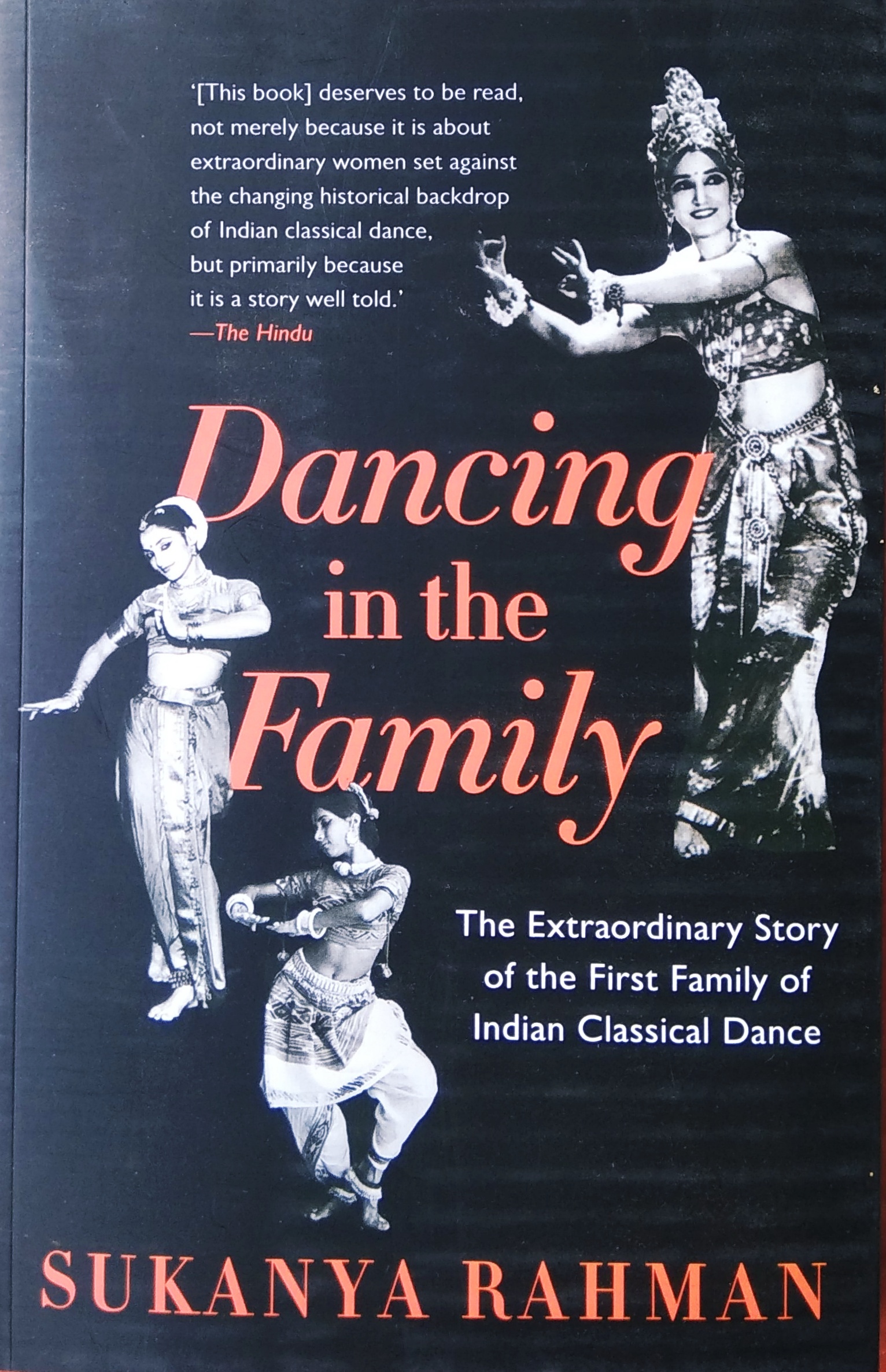Sukanya Rahman

In 1934 Ragini and her troupe were invited by the poet Rabindranath Tagore to perform in Shantiniketan. One late-evening performance was interrupted by piercing cries which suddenly sprang from somewhere in the front row, making the cultured Bengali audience, seated under a languid starlit sky, almost jump out of their skins.
“What are you doing to my mother? What are you doing to my mother?” shrieked Ragini’s four-year-old daughter, as she started to rush up on to the stage to rescue her mother from a ferocious demon who was chasing her around the floorboards.
Wearing the full traditional Kathakali makeup for a change, (Ragini’s dance partner) Gopinath was quite unrecognizable behind all the face paint and costume. A magnificent red moustache outlined in white curled up his cheeks, streaks of red rose above his eyebrows then curved down his nose, his eyes were thickly outlined in black, knobs of white pith clung precariously on his forehead and on the tip of his nose, a jewel-studded head-dress, bordered with iridescent green beetles’ wings added three extra feet to his height, layer upon layer of bustling skirts added girth. Long silver claws on the fingers of his left hand shimmered in the light of oil lamps as he darted from one corner of the stage to the other, trying to grab an end of Ragini’s sari and carry her off.
Indrani’s hysteria subsided when the godlike Rabindranath Tagore, seated next to her, took her on his lap, stroked her head gently and calmed her down with soothing words. India’s literary giant, Nobel Laureate, painter, philosopher, and founder of this open-air cultural institution created near Calcutta in 1901, was delighted by the child’s reaction. He turned around and explained to the agitated audience, in a voice that was surprisingly high-pitched for a man of his towering stature, which for a child the world of fantasy was real. The realm inhabited by gods and demons and angels and witches and sorcerers was real. The little girl’s outburst had been natural and honest, as it should be.
Peace was restored in the audience and the performance continued. From the epic Ramayana, Sita Harana, the story of Sita’s abduction by the demon-king, Ravana, was familiar to all Indians. The enactment of the episode in the Kathakali dance drama style from Kerala was, however, an entirely novel experience. There was little dancing in Sita Harana. The demon’s amorous pursuit of Sita, his fury at her rejection of him, and Sita’s despair and terror were conveyed through expressive mime and gesture. Frantic drum beats heightened Sita’s fears and Ravana’s frenzied pursuit of her.
After the final performance, marking the close of a week’s residency at Shantiniketan for the troupe, Tagore presented Ragini with a handwritten note of gratitude, which he read out, expressing delight at the exhibition given by Ragini Devi. “Those of us belonging to Northern India,” he said, “who have lost the memory of the pure Indian classical dance have experienced a thrill of delight.” Tagore said he was grateful at the assurance it had brought to the audience that the ancient art was still a living tradition in India with its grace, vigor and subtleties of dramatic expression.
Excerpts from the book ‘Dancing in the Family’ with the permission of the publisher Speaking Tiger, New Delhi.






















